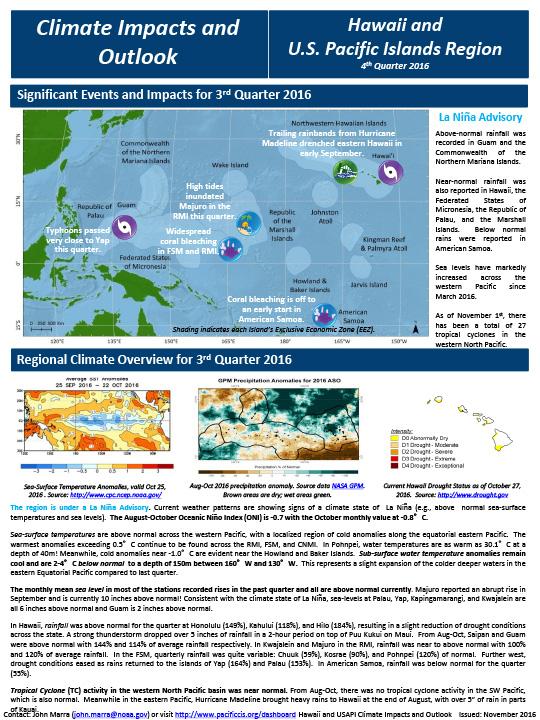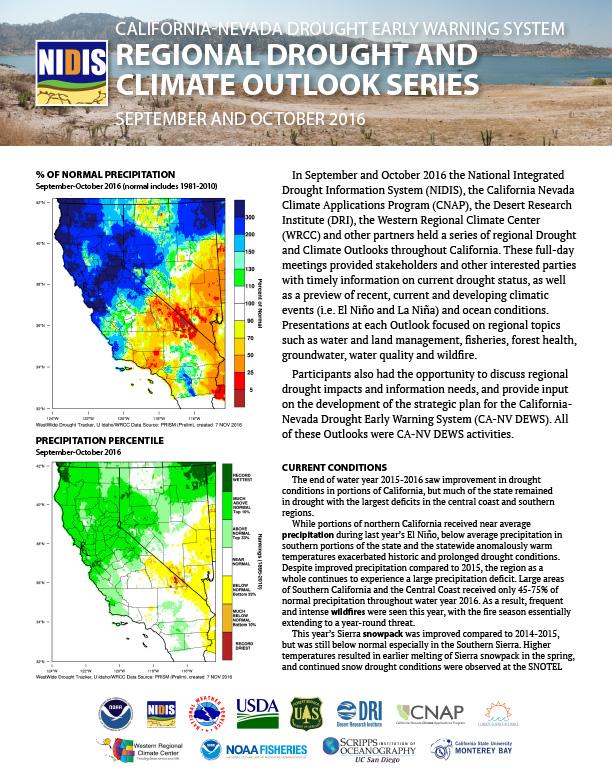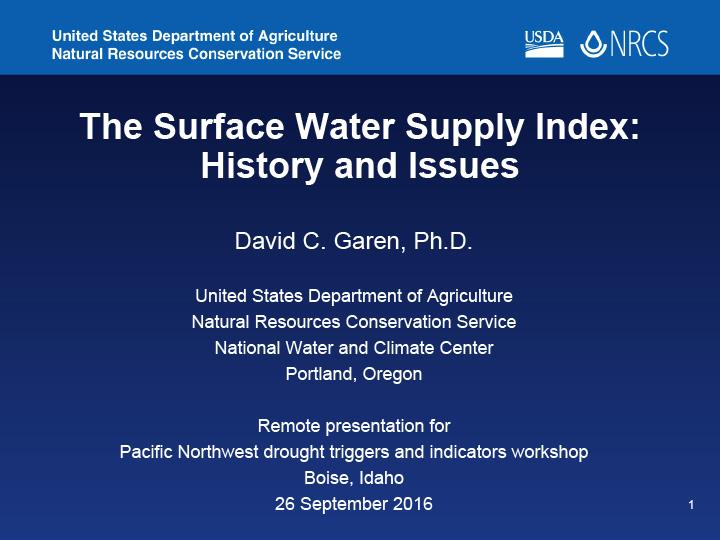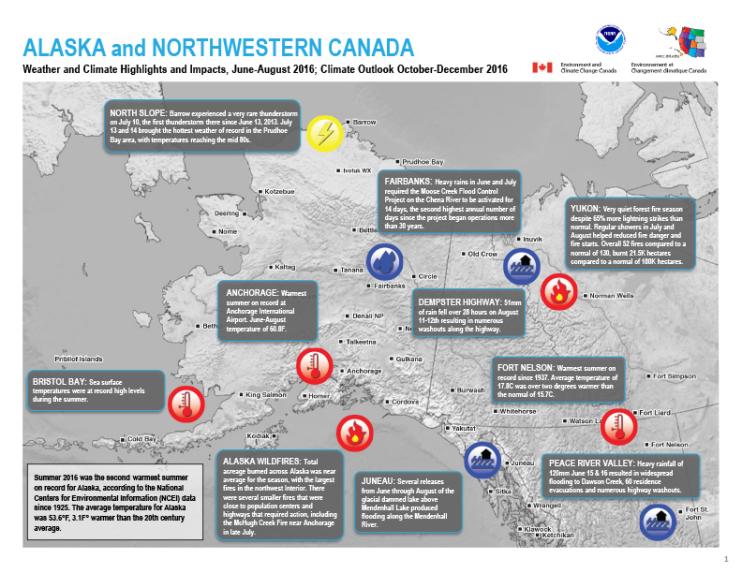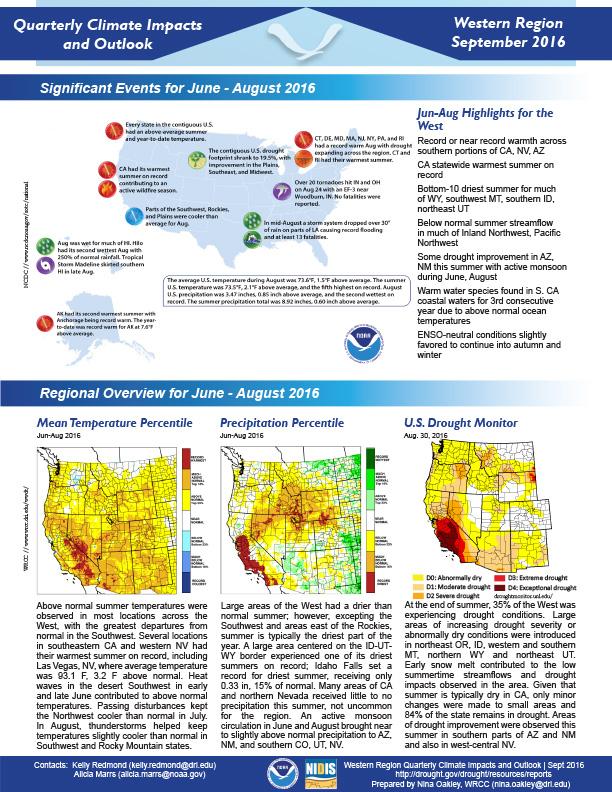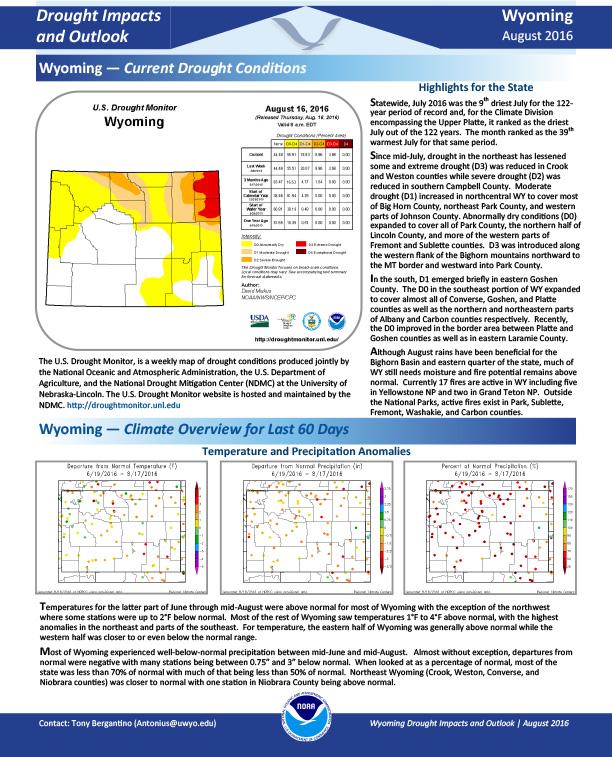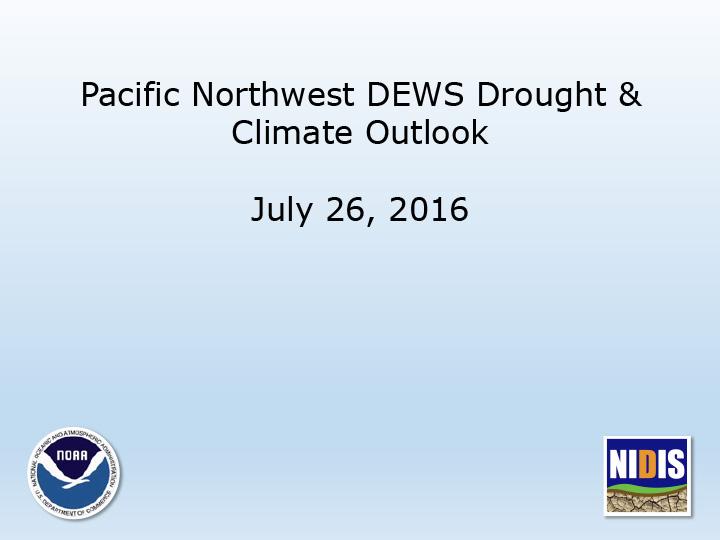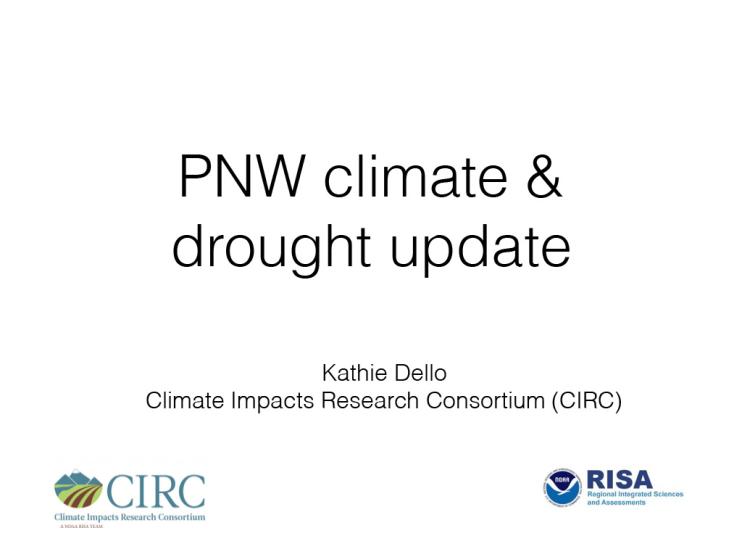Quarterly Climate Impacts and Outlooks for the Pacific Region for August – October 2016. Dated November 2016.
In September and October 2016 the National Integrated Drought Information System (NIDIS), the California Nevada Climate Applications Program (CNAP), the Desert Research Institute (DRI), the Western Regional Climate Center (WRCC) and other partners held a series of regional Drought and Climate Outlooks throughout California. These full-day meetings provided stakeholders and other interested parties with timely information on current drought status, as well as a preview of recent, current and developing climatic events (i.e. El Niño and La Niña) and ocean conditions.
Quarterly Climate Impacts and Outlook for Alaska and Northwestern Canada for June – August 2016. Dated September 2016.
Quarterly Climate Impacts and Outlook for the Western Region for June – August 2016. Dated September 2016.
Review of conditions in July/Aug 2016; EDDI; water resources; short- and long-term outlooks for temps, precipitation and drought.
Agenda of webinar, definition of NIDIS, definition of Drought Early Warning System, details about launch of Pacific Northwest Drought Early Warning System.
While much of the Pacific Northwest is experiencing abnormally dry or drought conditions, the region as a whole is faring better than it was a year ago during the record-breaking drought of 2015. The abnormally warm start to the calendar year led to a much earlier and faster melt of the region’s snowpack. As the summer of 2016 progresses this early runoff could result in below-average streamflows and higher water temperatures.


